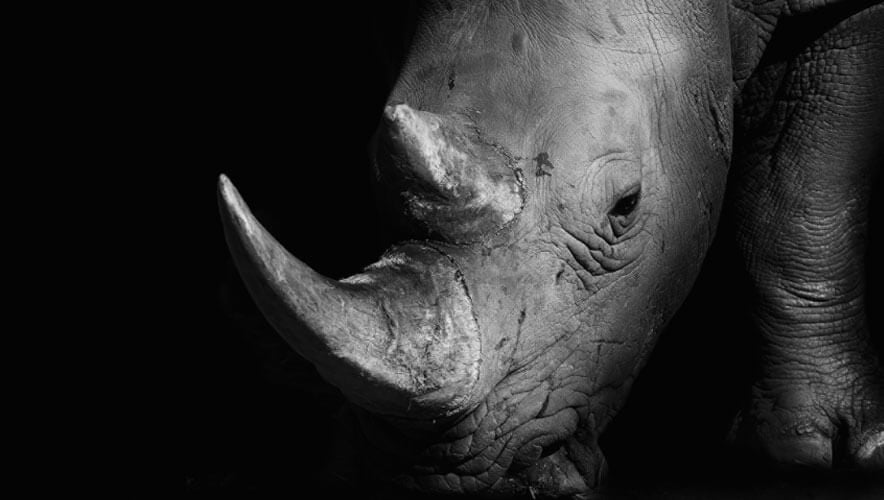Wildlife Trafficking
Terrorist groups, transnational crime organizations, and even rogue security personnel are all contributing to the growing international problem of illegal trade in wildlife, otherwise known as wildlife trafficking. And the detrimental effects of this multibillion-dollar international criminal activity, one of the costliest forms of illicit trade, are varied and alarming.
“Wildlife trafficking can contribute to instability and violence, and harm people as well as animals. According to reports, about 1,000 rangers were killed from 2004 to 2014,” says a recent study on the issue by the U.S. Government Accountability Office (GAO), Combating Wildlife Trafficking. Illegal trade in wildlife also fuels corruption, destabilizes local communities that depend on wildlife for ecotourism revenue, and undermines conservation efforts.
This illegal practice is primarily driven by demand for exotic pets, culinary delicacies, and medicines. In some cases, it has pushed endangered animal species to the brink of extinction; unlawful capture and slaughter have devastated the populations of tigers, elephants, rhinos, turtles, exotic birds, and pangolins. The latter, a prehistoric mammal covered in scales that resembles an anteater clad in armor, is one of the most trafficked animals on earth, with 100,000 pangolins killed every year. Pangolin scales are sold by the bag in Asia, where some believe they can cure cancer, acne, and a host of other maladies.
Overall, wildlife trafficking results in revenue losses of anywhere from $7 billion to $23 billion, according to estimates from the United Nations Environment Program. In 2012, the price of rhino horn reached roughly $27,000 per pound, which was twice the value of gold at the time and more valuable on the black market than diamonds and cocaine, according to the World Wildlife Fund.
Although the United States is one of the world’s largest end markets for trafficked wildlife, much of the practice relies on an Africa-Asia nexus for supply and sales. For example, illicit elephant ivory is stolen in Africa, and most often comes out of Kenya and Tanzania. It is then shipped to China, Thailand, and Vietnam, with Malaysia and Singapore acting as transshipment hubs, according to a 2014 report, Out of Africa: Mapping the Global Trade in Illicit Elephant Ivory, issued by Born Free USA and C4ADS, two nongovernmental organizations.
Of all the bad actors involved in these practices, transnational organized crime networks are driving the trade. Wildlife trafficking is an increasingly popular area of specialization for international organized crime networks, according to the United Nation’s Office on Drugs and Crime 2016 World Wildlife Crime Report.
Last July, the U.S. State Department’s Transnational Organized Crime Rewards Program identified the Xaysavang Network as an international wildlife trafficking syndicate that facilitated the killing of elephants, rhinos, and other protected species. Vixay Keosavang, a Lao national, is believed to be the leader of the network, according to the U.S. State Department, which is offering a reward of up to $1 million for information leading to the dismantling of the Xaysavang Network.
Terrorist groups also seem to be involved in wildlife trafficking, but the extent of the involvement is still up for debate. The al-Shabaab militant group is either directly or indirectly (through taxation of illegal goods moving through areas they control) involved with illegal wildlife trade, the GAO report found. There are also some reports that al-Shabaab has been buying and selling ivory to fund military operations, although some argue that evidence of that is inconclusive, the report adds.
Finally, wildlife trafficking, enabled by corruption, contributes to instability and violence in many regions. According to a 2013 report from the U.S. Office of the Director of National Intelligence, systemic corruption enables illegal ivory and horn trade, and in turn the trade exacerbates corruption by making high-value illicit products available to influential officials along the supply chain, such as police, customs officers, and local security personnel.
The movements of armed poachers and traffickers also increases border insecurity; for example, gun battles at the South African border often occur between law enforcement and poachers from Mozambique who are trying to gain access to rhinos in Kruger National Park.
To beef up U.S. efforts to fight wildlife trafficking, President Barack Obama issued an executive order in 2013 that established an interagency task force, with 17 federal agencies as members, charged with developing a strategy to guide the government’s efforts. In 2015, the task force released an Implementation Plan for the National Strategy for Combating Wildlife Trafficking.
Task force agencies, following the implementation plan, are helping to fight wildlife trafficking through a variety of efforts, the GAO report found. But it also found that, “at the strategic level, the task force has not identified performance targets. Without such targets, it is unclear whether the task force’s accomplishments are meeting expectations, making it difficult to gauge progress.”
Given this, the GAO recommends that the secretary of state, the secretary of the interior, and the attorney general jointly work to develop performance targets for the task force. The agencies agreed with the GAO’s recommendation.
